The U.S.P.
(The United States Pharmacopea)
ABOUT THE U.S. PHARMACOPOEIA:
Throughout this book, reference has been made to the US Pharmacopoeia; and not without good reason. In a time with little or no government interference, its standards for formulation were treated by both druggist and drug manufactures, with an almost religious reverence.
Probably inspired by the British Pharmacopoeia, its history started in the 1820s, when several American medical societies came together to create the first edition of the United States Pharmacopoeia (U.S.P.). Its purpose was to identify and standardize the then mostly botanical drugs in medical use. The U.S. Pharmacopoeia can, therefore, best be thought of as a medical cookbook; one that dictates the exact formula, parts of the plant, and the exact method of preparation of base drugs for pharmaceutical use.
In today's modern world of pills and tablets, we tend to forget that probably more than seventy five per cent of all modern-day drugs are nothing more than plant extracts or synthetic chemical reproductions of them. In the early 19th century, that figure would be closer to 100 percent---which was a source of some trouble, as the medical properties of botanical drugs can vary greatly from one plant to another.
The U.S.P. dealt with this problem by dictating the exact parts of the plant that were to be used and the exact method of manufacture. Later on, it would also set up standards of potency for medicines. By the early 20th century, If the label read, "Made as per U.S.P standard," the doctor or druggist could be assured of its standardized strength.
Of interest to the historian is the fact that the U.S.P. (even thought it was technically created by a private society) would eventually be enshrined into United States federal law, and soon became the envy of the world. For Americans, unlike some of their foreign counterparts (which had to deal with royal decrees etc.), had little problem making changes to the pharmacopoeia as soon as changes were called for.
 |
 |
 |
 |
CANNABIS--Through the Years
There is much that can be said about the subject, but maybe it would be best to let the U.S.P. speak for itself. Note how the definitions for Medical Cannabis (as well as its preparation and standardization) changed throughout the years.
U.S. PHARMACOPOEIA
1851 (3rd Ed)
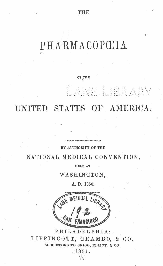
[Click on image to see more]
Within a decade after O'Shaughnessy published his findings, Cannabis first made its way into the 1851 (3rd edition) of the U.S. Pharmacopoeia. The growth of its use and popularity was so fast that had the pharmacopoeia committee not convened only once every decade, it would most certainly been entered before then.
Often confused with true Cannabis - Apocynum or Canadian (Indian) Hemp, while sharing a common name, share very little else in common. They are two totally different species of plant. Most first-time antique collectors, however, find the similarity of names somewhat confusing. It should be remembered that at the time of printing, there was great debate over whether the hemp plant was one or a number of different species of the same family.
U.S. PHARMACOPOEIA
1861 (4th Ed)
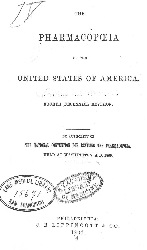
[Click on image to see more]
For medical historians (as well as antique hunters) the U.S.P. makes for an excellent source of documentation. Nothing emphasizes this point better than the evolution of Cannabis and its uses. From a simple entry in its (1851) 3rd edition, each subsequent edition would expand on both its definition as well as its medical uses. Note the additional uses now officially recognized by the U.S.P. in its 4th addition.
U.S. PHARMACOPOEIA
1875 (5th Ed)
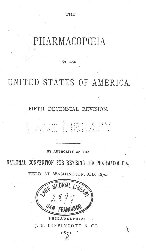
[Click on image to see more]
[ NOTE - the definition is no longer the died plant tops, but now the flowering tops of the female plant. ]
[ Again; Apocynum (Canadian Hemp) should not be confused with Cannabis. Other than a similar name (they are two different species), they share little else. ]
U.S. PHARMACOPOEIA
1882 (6th Ed)
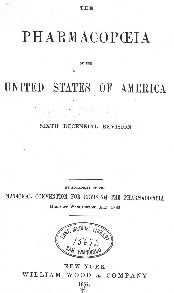
[Click on image to see more]
The 5th and 6th editions show the changes (additions and evolution) in the medical uses Cannabis. However, note the confusion that still existed over exactly how many different species (Cannabis Indica verses Cannabis Americana) of Hemp plant existed.
U.S. PHARMACOPOEIA
1893 (7th Ed)

[Click on image to see more]
U.S. PHARMACOPOEIA
1900 (8th Ed)
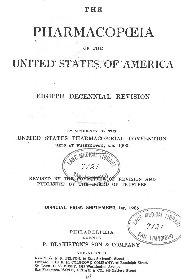
[Click on image to see more]
U.S. PHARMACOPOEIA
1916 (9th Ed)
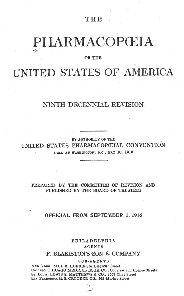
[Click on image to see more]
The 9th edition of the USP, came out during an era (considered by many) to be the high point for medical Cannabis use. The era of persecution (which led to the anti-medical marihuana laws) had not yet begun and, technologically speaking, most of the manufacturing problems associated with botanical drugs had long ago been worked out. Note that standardization of the potency via psychological testing (on dogs) was now required by the U.S.P.
U.S. PHARMACOPOEIA
1926 (10th Ed)
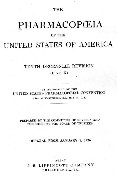
[Click on image to see more]
U.S. PHARMACOPOEIA
1936 (11th Ed)

[Click on image to see more]
Note that "Tincture of Cannabis" was officially removed from the U.S.P. (although it was than entered into the National Formulary). What many find surprising is that it is still entered in any form. At a time when stories abound about the evils of "The Weed of Madness," it must have taken a great deal of human courage to have made any mention of it in their 11th edition.
U.S. PHARMACOPOEIA
1942 (12th Ed)
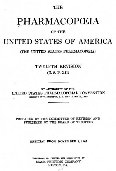
[Click on image to see more]
Starting in the mid-1930s, the Federal Government joined in a campaign to outlaw medical Cannabis---in whatever form. [see Chapter 17]
The campaign, which made effective use of radio, magazine, and newspaper articles, told of the evils of the medical Cannabis plant, that its use would lead to insanity, to the commission of the most depraved acts including rape, child molestation, axe murders, etc.
This campaign, while comical to us today, did succeed in putting an end to the medical use of Cannabis. By the time of the 12th edition, the inevitable could no longer be avoided. Cannabis once as common as aspirin was officially removed from the U.S.P. As the years went on, even its use in medical research would be outlawed.
WANT BETTER PICTURES: All pictures are available in CD-Rom Format from the Museum. CD-Rom is free of charge, but we do ask for a dollar donation to offset postage as well as actual cost of the media.
 Back to Apendix B |
 BACK TO MAIN INDEX PAGE |
 On to Appendix D |